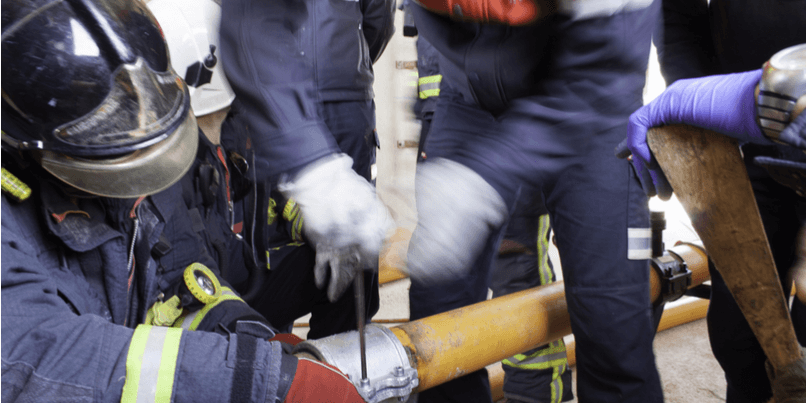 The growth in global industry and manufacturing, together with the ever-present risk of terrorist threat, means emergency personnel are increasingly being required to respond to incidents where there is risk of exposure to explosive atmospheres, low or enriched oxygen, or the presence of lethal toxic vapours.
The growth in global industry and manufacturing, together with the ever-present risk of terrorist threat, means emergency personnel are increasingly being required to respond to incidents where there is risk of exposure to explosive atmospheres, low or enriched oxygen, or the presence of lethal toxic vapours.
For response crews arriving on scene there are two essential questions to consider. Is the air safe enough to breathe? And are there any specific toxic gases present?
Gas detection is fundamental to emergency response - and multi-gas detectors are the ideal tools for serving the majority of first responders' gas detection needs.
Ensuring that crews have access to the right air-monitoring equipment, and that they're trained in how to use it, is essential for enabling them to make confident decisions in complex scenarios.
In this blog post we provide an overview of the most common types of air-monitoring equipment. And we explore how gas detection simulators can aid in the effectiveness of first response training.
Portable multi-gas detectors come in a variety of styles and configurations, some with the ability to detect up to six gases at a time. So let's first consider the four most common types:
Catalytic combustion sensors - in which a heated wire is used to detect a wide variety of flammable gases from natural gas leaks to gasoline spills. In catalytic combustion, power is applied to a special wire coil, in much the same way as a traditional light bulb. Any combustible gas that is exposed to the sensor will react on the wire surface and produce a display reading.
Electrochemical toxic gas sensors - which are used to detect the presence of toxic hazards. An electrochemical sensor is similar in design to a small battery except that the chemical component that is required to produce the electric current is not present in the sensor cell. As the target gas diffuses into the membrane of the sensor, this reacts with chemicals on the sensing electrode to produce an electrical current.
Infrared detectors - commonly used to detect gases that are less reactive and therefore cannot be detected using typical electrochemical cells (such as CO2 or hydrocarbons). Instead of relying on a chemical reaction, infrared sensors determine the amount of gas present by measuring how much light the specific gas absorbs.
Photoionization detectors (PID) - which are used to detect volatile industrial compounds (VOCs) such as methane which can be present during industrial spills. PIDs rely on the specific chemical properties of the VOCs, but instead of absorbing light they use a light source in the UV spectrum to ionize electrons off gas molecules.
Realistic multi-gas detection training
The last decade has seen an increasing demand for advanced training tools to create the highest levels of realism, to reinforce instruction and to enhance student learning.
The use of intelligent simulation technology for chemical warfare agent training is well established. And now that same pool of knowledge and expertise has been applied to training in multi-gas detection.
One such example is Argon Electronics' Multi-Gas SIM - an App-based simulator that provides instructors with the ability to set up complex multi-gas training scenarios using an android phone.
The simulator is highly configurable which means instructors can set the number of gas sensors they they want their students to view and they can select the type of sensor (be it infrared, electrochemical, PID etc).
They can also program the alarm settings in accordance with the operational detectors in use - so as students move around the training environment, their display readings will adjust to simulate events such as a breached alarm.
The option of an instructor remote means that trainers can remotely monitor student readings and activity, to further stimulate discussion and reinforce knowledge.
For those wanting to implement large-scale releases, the multi-gas simulator can also be used with Argon's PlumeSM system to provide an enhanced level of realism and a more focused training experience.
Realism, repeatability, safety and efficiency are all key to effective HazMat training.
Simulator detectors tools such as Argon's Multi-Gas SIM promise to play an invaluable role in aiding trainees' understanding of gas detection to ensure the right decisions are made, however challenging the scenario.






